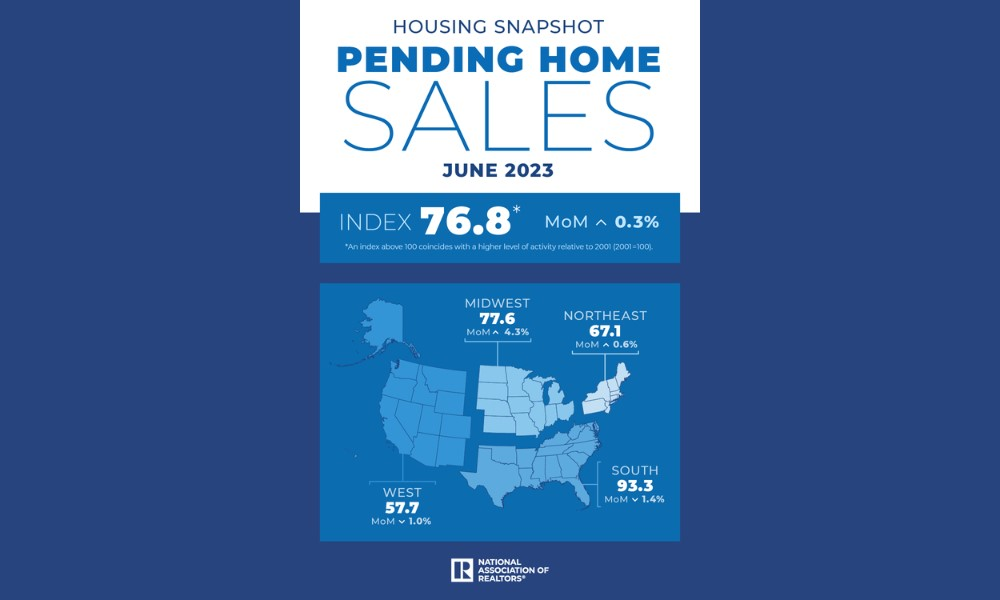"The recovery has not taken place, but the housing recession is over"

June pending home sales increased for the first time since February, climbing a modest 0.3% from May.
The National Association of Realtor’s Pending Home Sales Index (PHSI) edged up 0.3% month over month to 76.8 in June. However, it was down by 15.6% on a year-over-year basis.
“The recovery has not taken place, but the housing recession is over,” said NAR chief economist Lawrence Yun. “The presence of multiple offers implies that housing demand is not being satisfied due to lack of supply. Homebuilders are ramping up production and hiring workers.”

Kate Wood, housing and mortgage expert at NerdWallet, commented: “June is usually prime homebuying season, so normally we’d expect a stronger showing. High hopes that the housing market’s returning to normalcy may be coming down to earth, with May showing a 2.7% decline in pending home sales. Normally, April to May would see a bump as homebuying season really gets underway. One big reason contract signings are stalling? There simply isn’t enough supply. Even as home buyers adjust to the new reality of higher interest rates, their home searches remain stymied by lack of inventory.”
NAR expects the 30-year fixed mortgage rate to average 6.4% in 2023 before declining to 6% in 2024, while the unemployment rate will rise slightly to 3.7% this year before increasing to 4.1% next year.
Read more: Fed hikes interest rates again
“With consumer price inflation calming close to the Federal Reserve’s desired conditions, mortgage rates look to have topped out,” Yun said. “Given the ongoing job additions, any meaningful decline in mortgage rates could lead to a rush of buyers later in the year and into the next.”
Learn everything you need to know about recession in mortgage rates here.
However, existing-home sales will likely fall 12.9% to a 4.38 million rate in 2023, according to NAR. But existing sales will rebound 15.5% to 5.06 in 2024. Meanwhile, NAR projects a 12.3% jump in new home sales, up to 720,000 units in 2023, and another 13.9% in 2024 to 820,000. Housing starts will decline 5.3% to 1.47 million in 2023 before increasing 5.4% to 1.55 million in 2024.
First American economist Ksenia Potapov noted that the divide between the existing-home and new-home markets continues to grow.
The national median existing-home price will remain stable – dipping 0.4% to $384,900 before bouncing back 2.6% next year to $395,000. New home price growth will also slow this year before improving, with the median price down 1.9% to $449,100 in 2023 and then up by 4.2% to $468,000 in 2024.
“While existing-home sales remain muted, multiple leading indicators on the new-home side, including new-home sales, new-home construction, and homebuilder sentiment, have trended higher,” Potapov said. “There is plenty of demand on the sidelines, the labor market remains strong, and potential home buyers are ready to jump in. While limited inventory is likely to hold back sales activity, the housing market remains resilient.”
“It is critical to expand supply as much as possible to widen access to homebuying for more Americans,” Yun said. “Home prices will be influenced by how much inventory is brought to market. Increased homebuilding will tame price growth, while limited construction will lead to home price appreciation outpacing income growth.”
Want to keep up with the latest mortgage news? Get exclusive interviews, breaking news, and industry events in your inbox, and always be the first to know by subscribing to our FREE daily newsletter.



